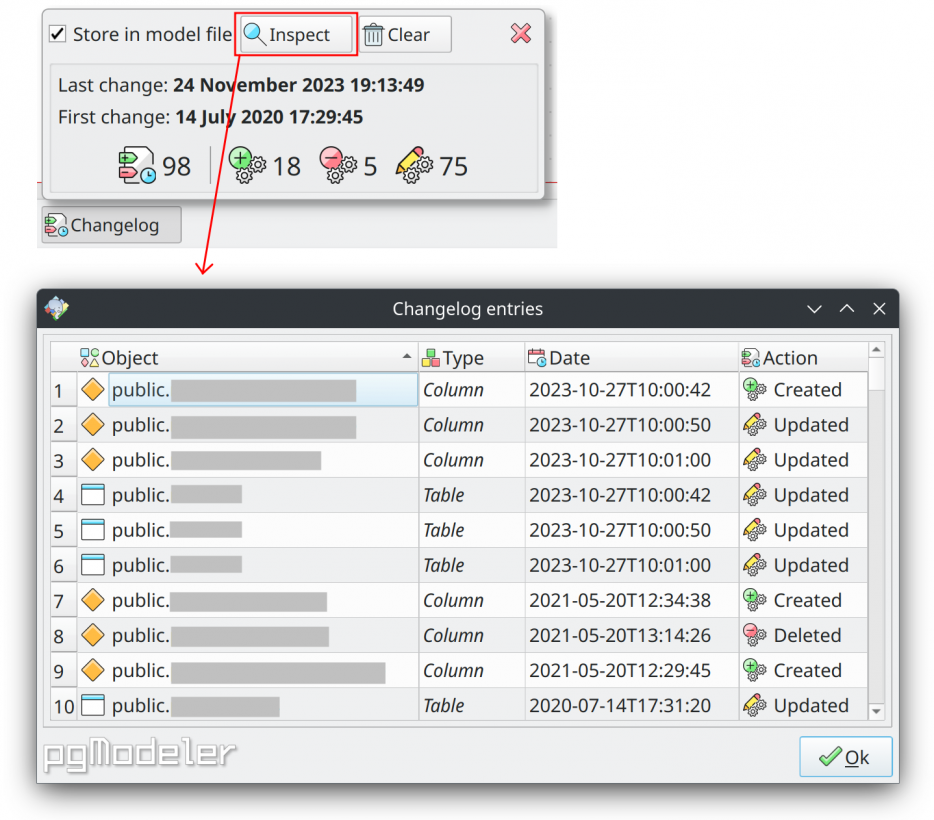6.16. Model changelog
To make the partial diff as user-friendly as possible, a minimalist changelog was implemented in the database model. As the name suggests, it registers any create, update, or delete operation performed over any object. The changelog contains a set of entries, each one composed of the date of the action (in local date/time), the object's signature, the type of the object, and the action taken. A sample of the XML code of the changelog is displayed below.

This simple changes list is the basis of the partial diff which was explained in the previous chapter. The model's changelog has, by default, a limited lifetime. It lasts while the database model isn't closed. But the user can force the writing of the changelog in the database model file which can be useful to store all the modification history and use it in the partial diff anytime.
Despite the usefulness of storing the changelog in the file, there's an important side effect: the quick bloating of the XML code that represents the whole database model. So it's up to the user to decide if it's worth storing the changelog in the model file, knowing that it can grow quickly, or if using a non-persisted changelog is okay for the model being worked on. The recommended is that if you are working on the model for the first time and the database it represents does not exist or you don't intend to develop a database incrementally (add objects to the model > generate diffs > repeat) you don't need to save the changelog to the model file, otherwise, if you constantly work by adding objects to the model and generate diffs it's useful to keep track of the model's changes by persisting them into the model file. To have some control over the model's changelog, a simple widget was created that can be used to tweak the behavior of the changelog and check some useful information like the last change made on the model and how many entries the changelog has.

| Option/Action/Attribute | Description |
|---|---|
Store in model file |
Toggles the saving of the changelog to the database model file. |
Clear |
Clears the entire changelog. |
These were the last explanations about the pgModeler's advanced tools and how they can deliver to the user a good balance between flexibility and productivity. As could be seen too, some of these tools were introduced in new releases, which made pgModeler step up to another level of maturity, turning it into a more reliable and efficient data modeling and database administration software. Said that we conclude chapter 6 of this manual. In the next one, we'll see some tips and tricks on how to help the user even more in the modeling process.